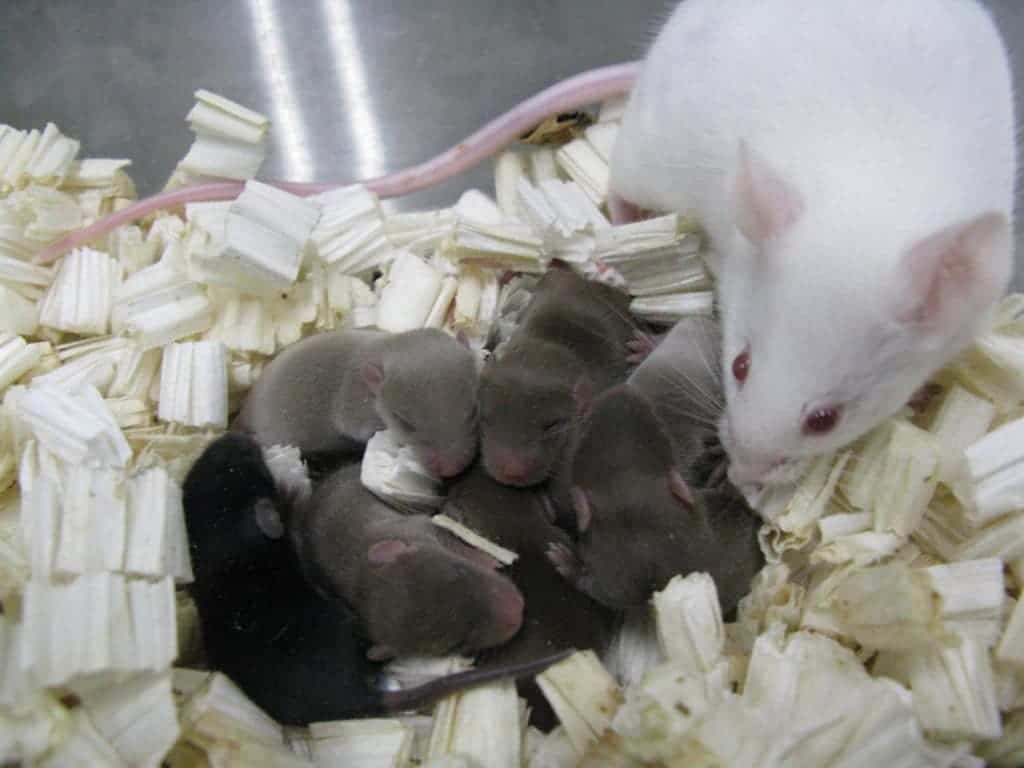How one of the big questions about a potential space age was answered.

These baby mice were born from sperm flown aboard the International Space Station for about nine months. Image credits: Teruhiko Wakayama.
If we want to discuss long-term space travel or some sort of colonization, there’s one thing which always comes up: reproduction. We’re good at that on Earth (perhaps even too good, I’d say), but can we do it in outer space or on Mars? This isn’t just some random question, we genuinely don’t have a good idea how reproduction is affected by low-gravity and increased radiation. Well, according to a study published this week in Proceedings of the National Academy of Sciences, we shouldn’t worry too much about that: researchers used freeze-dried sperm stored on the International Space Station (for nine months), and it produced healthy offspring. While this doesn’t necessarily mean the same applies to humans, it’s quite promising.
Kris Lehnhardt, a physician at George Washington University who specializes in emergency and extreme-environment medicine comments on how much we don’t know about these aspects:
“We really don’t know any of the things that we need to know to say that human reproduction in space is going to be successful or safe,” he says. “It’s not been studied in much detail.”
No one has really had sex in outer space (not officially, at least), so we don’t really know how that works. With all this in mind, developmental biologist Teruhiko Wakayama wanted to answer some of the questions regarding the safety of reproduction in outer space.
“We found that only a few studies were performed about mammalian reproduction in space, and most of them showed no clear results due to the difficulty of taking the mice or rat into space,” says Wakayama, of Japan’s University of Yamanashi.
“The radiation exposures that are reported in the paper are nowhere near the level of the radiation exposures that are going to be experienced once we travel beyond the protection of the Van Allen belt,” Joe Tash of the University of Kansas Medical Center told National Geographic, referring to another layer of radiation shielding that’s wrapped around Earth and that envelops the ISS.
The findings aren’t necessarily surprising. Astronauts go on the ISS all the time, and they can still have babies. Even those who spend lengthy periods there and even go out for spacewalks and are exposed to extra radiation do quite fine. Still, sperm is one of the most vulnerable cells, and if something were to go wrong (such as too much exposure to radiation), that’s pretty much the first place you’d look for damage. However, this still doesn’t tell us anything about how microgravity and increased radiation affect conception (done the old fashioned way), pregnancy, fetal development, or even giving birth. Could we safely have space babies? That’s an open question.
Now, Wakayama wants to try the other thing: send some fertilized mouse eggs to the ISS and see how they fare, as well as try similar things with cryo-preserved human sperm (not fertilize someone, just take it to outer space, bring it back, and study it).
Journal Reference: Sayaka Wakayama et al — Healthy offspring from freeze-dried mouse spermatozoa held on the International Space Station for 9 months. doi: 10.1073/pnas.1701425114









